My experience & tips for using Cuddle minky
I recently shared my scrappy Arrow Stone Quilt finish; today, I want to share my experience and tips for using Cuddle minky fabric for backing and binding on that quilt. I learned some hard lessons and had some pleasant surprises, too. I’m excited to give you all the details and helpful tips for using Cuddle minky.
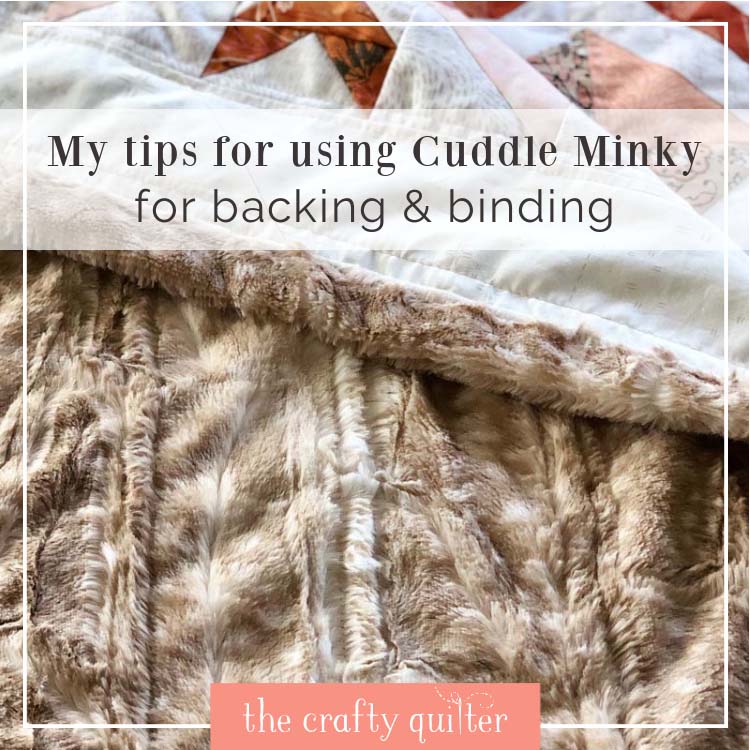
Update: I’ve just added a section at the end of this blog post on microfibers and their effect on the environment. I think this information is important and will bring awareness to these issues. Even though I use and recommend these materials because of their softness, I feel an obligation to share the caveats of doing so, plus some actions we can take to lessen their impact.
What is Cuddle minky?
Cuddle and minky have become interchangeable words. They both refer to a microfiber plush fabric made from polyester. Cuddle is the Shannon Fabrics brand name for minky. It’s like Kleenex is to facial tissue. Below are the basic characteristics of Cuddle minky.
- 100% polyester
- Knit fabric
- Machine washable and dryable
- Does not shrink
- It has a nap/pile
- It’s ultra soft
Cuddle is often used for making baby blankets, stuffed animals and as backings for quilts. It comes in 60″ wide sizes (which is standard for Cuddle), and it’s also available in an extra-wide 90″ size. There are a variety of finishes as well: embossed, sparkle, solid, print and faux fur.
For my scrappy Arrow Stone quilt, I used Luxe Cuddle Fawn in beige. It is gorgeous and ever so soft! My quilt top finished at 53″ x 68″, so two yards of fabric was just right (60″ x 72″) and I didn’t need to piece the back.
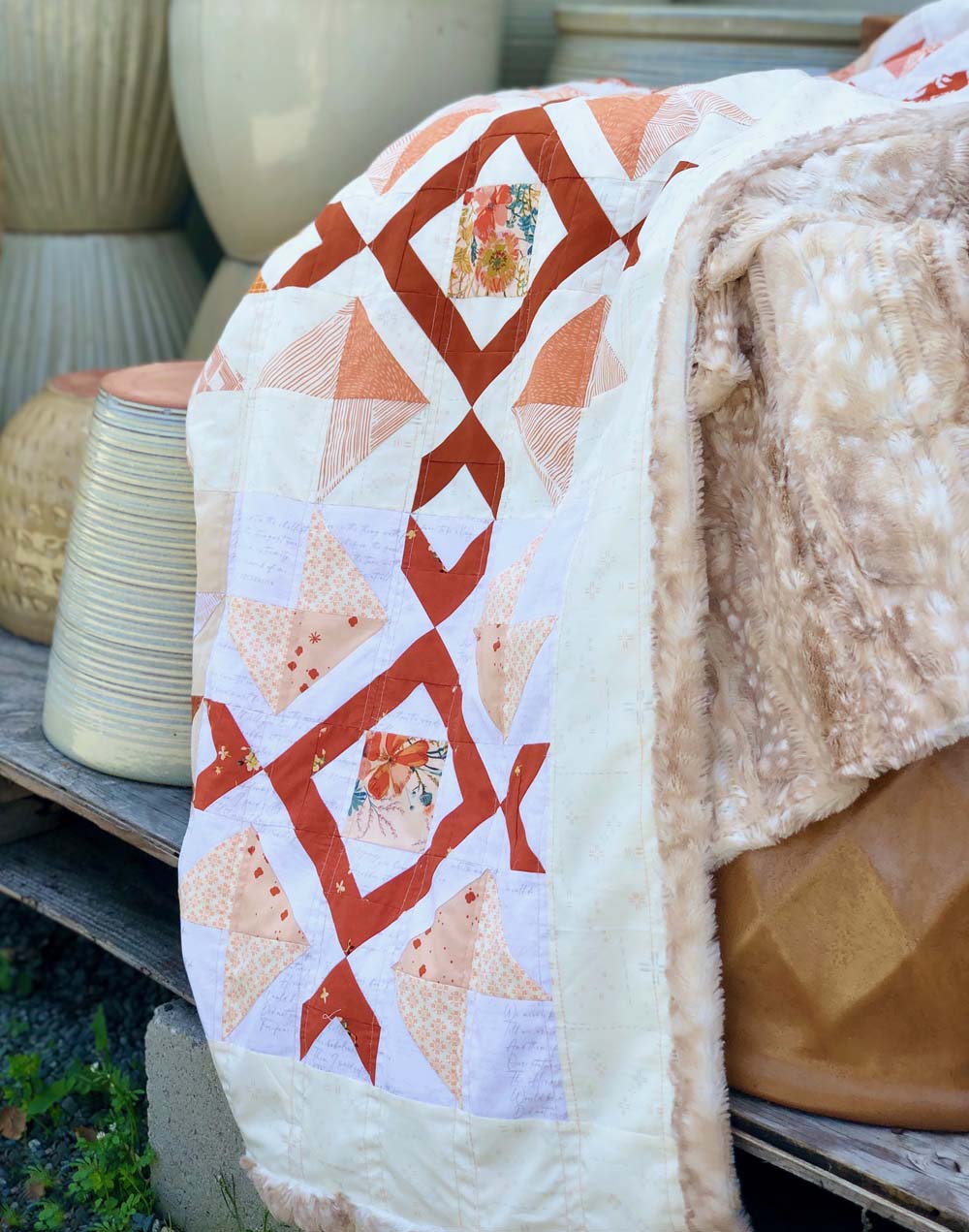
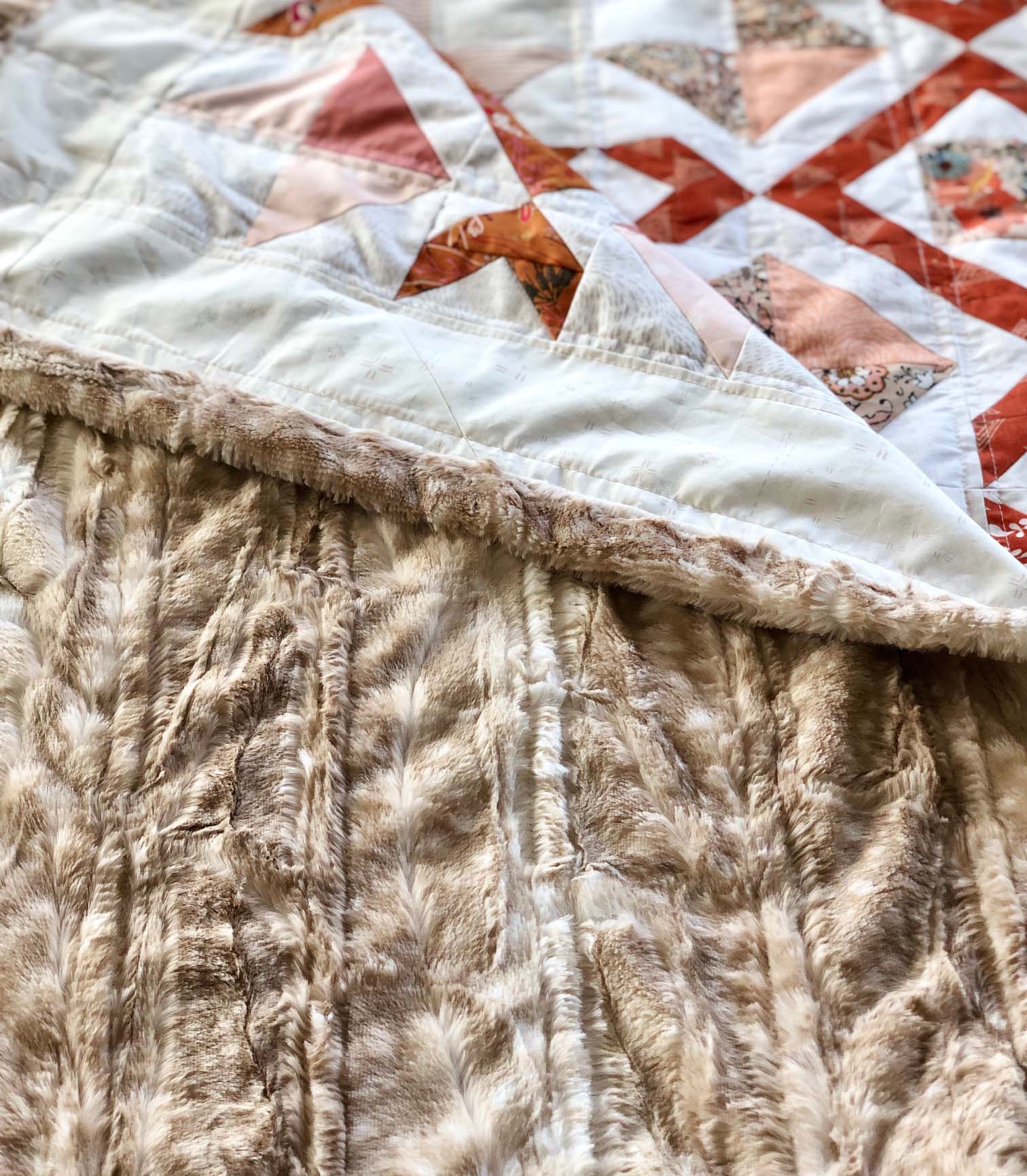
My experience with Cuddle minky (Luxe)
I knew I wanted to use this particular Cuddle Luxe Fawn (in beige) for this quilt. It had been in my stash for a while and it was the perfect color. If you’ve experienced the softness of regular Cuddle, you’ll be blown away at the silky softness of Cuddle Luxe. It’s just amazing!
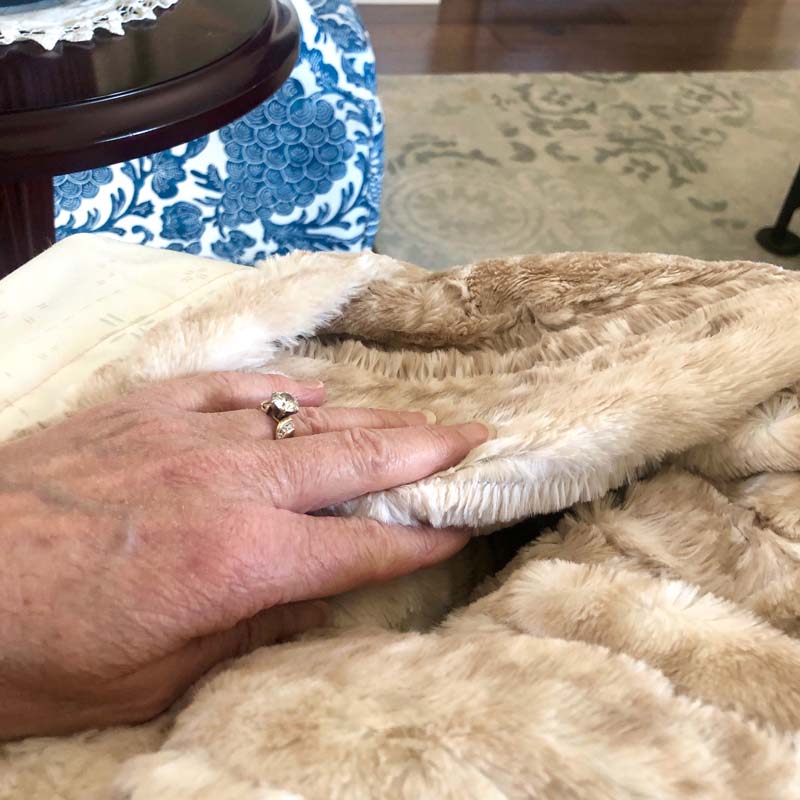
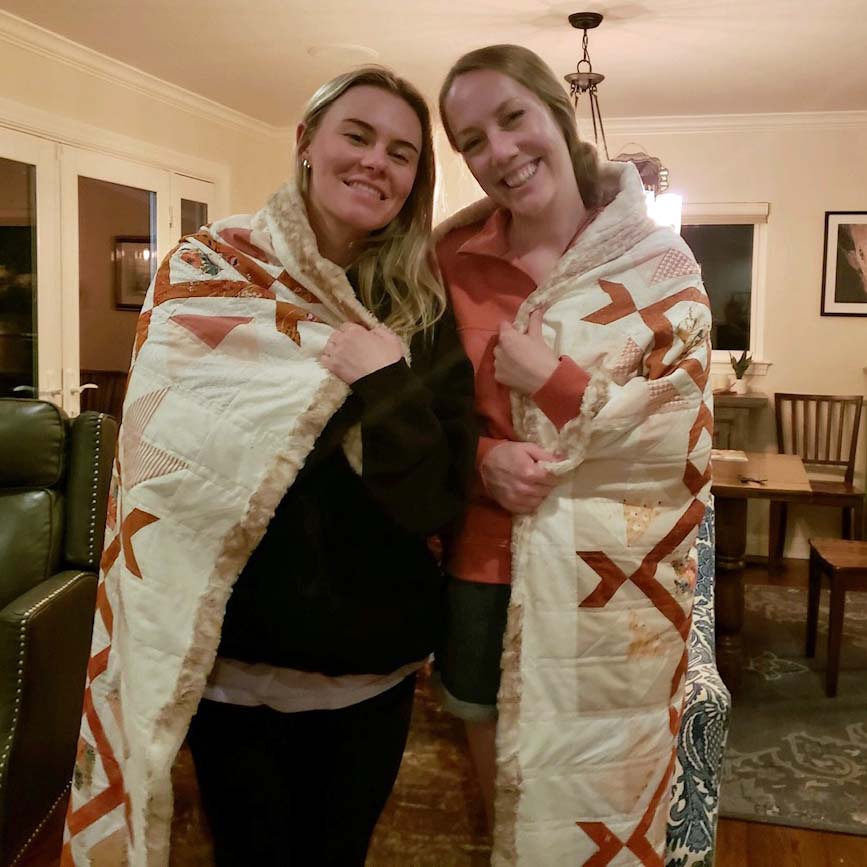
Because of this extra softness, I thought it would be nice to use it as the binding as well. I’m really glad I did, and it was super easy to do (after a bit of research first). I’ll give you more details about the binding process in a bit.
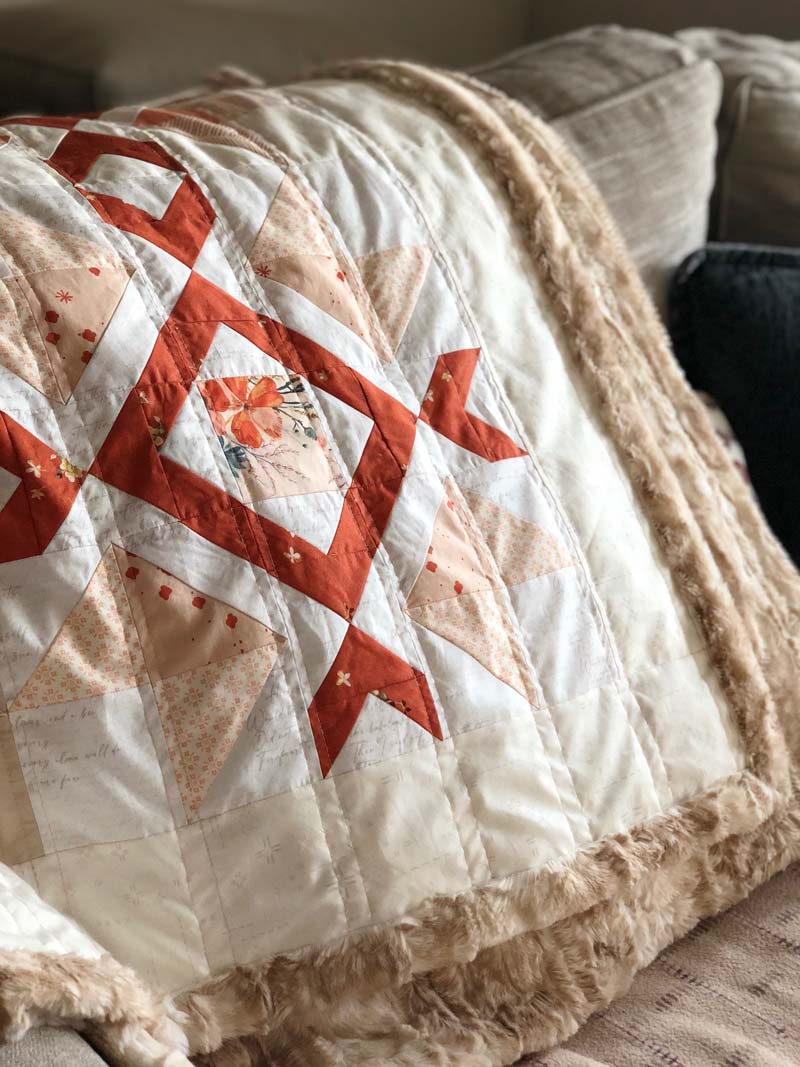
I will say there is a learning curve to working with Cuddle. Here are a few things to be aware of when you first use it.
- It is slippery which makes it move around a lot.
- When you cut it, you’ll get “cuddle dust” that can be messy, but easily contained and cleaned.
- It adds more weight to your quilt than cotton alone.
- It requires the use of a walking foot for seams and quilting.
Basting a quilt with Cuddle
One thing about Cuddle, is that it’s heavier than most quilting cotton or flannel. I didn’t want my Arrow Stone quilt to be bulky and heavy especially since I was going to quilt it myself. With that in mind, I decided to leave out any batting. This is a decision that I now regret for a few reasons.
First, there are some very lightweight battings available that would have kept it light enough. I’m thinking of a cotton/poly blend or silk or even wool batting (although maybe too lofty for this one). Second, the finished quilt is a little too flimsy. I feel like the cotton top doesn’t “match” the backing in comfort level. Having some batting would have definitely made the top more cuddly like the back. It’s a very nuanced sort of thing!
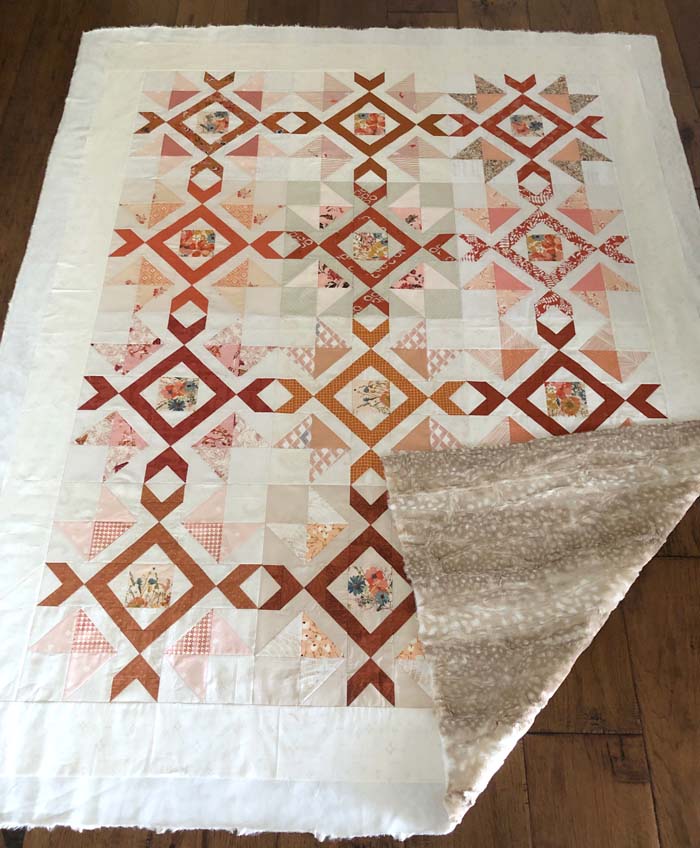
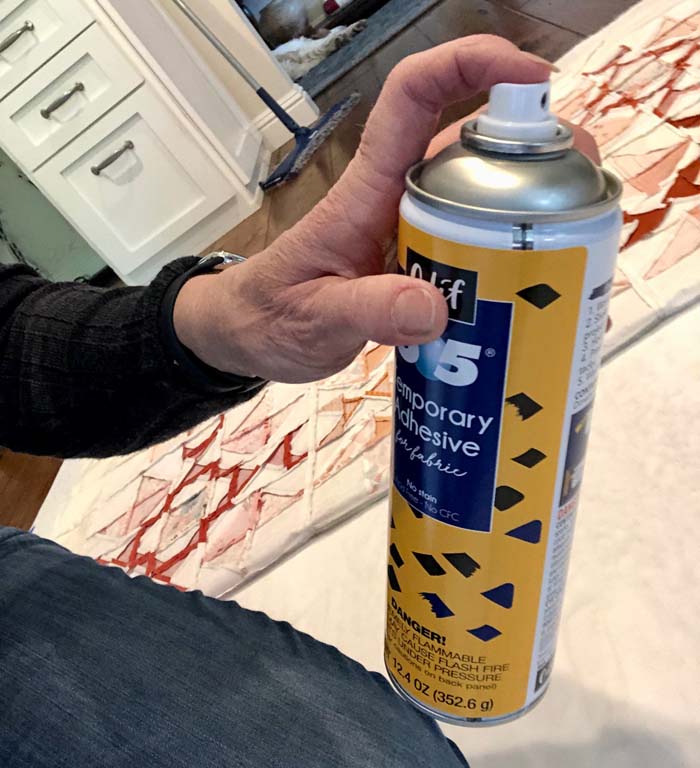
I chose to spray baste the quilt top and Cuddle minky together. I had a hunch that I didn’t use enough spray and I was right. It wasn’t enough to hold the two layers together. If I had added safety pins during the basting process along with the spray, it would have been fine. Unfortunately, I didn’t find this out until I was quilting it. I had the frustrating experience of dealing with ripples across the center of the quilt as I was quilting. It’s okay, though. It adds texture and the human touch is ever present.
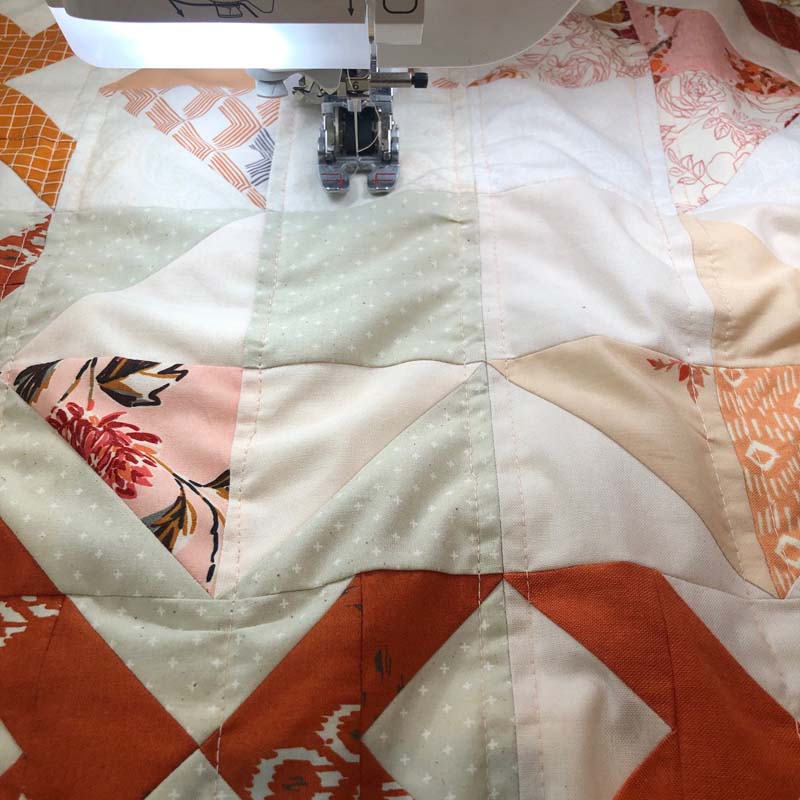
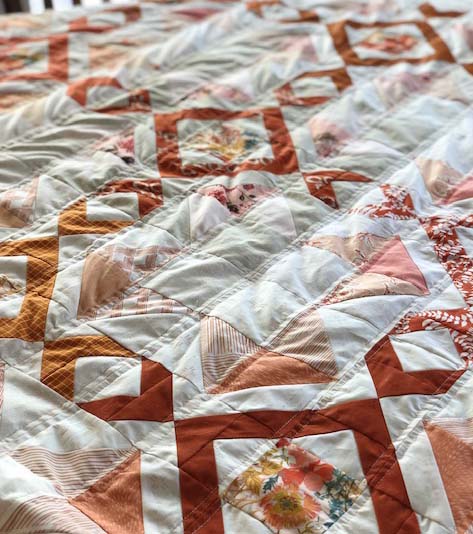
Using Cuddle to self-bind a quilt
I wanted to bring some of the Cuddle softness from the back of the quilt to the front. Using the backing to self-bind a quilt is a great way to do that. What that means is there is no separate binding attached. The extra backing fabric (after quilting) is trimmed to the desired width of the binding. Then it is wrapped around to the front and stitched down by machine. Unlike regular binding, the corners are mitered first with a seam.
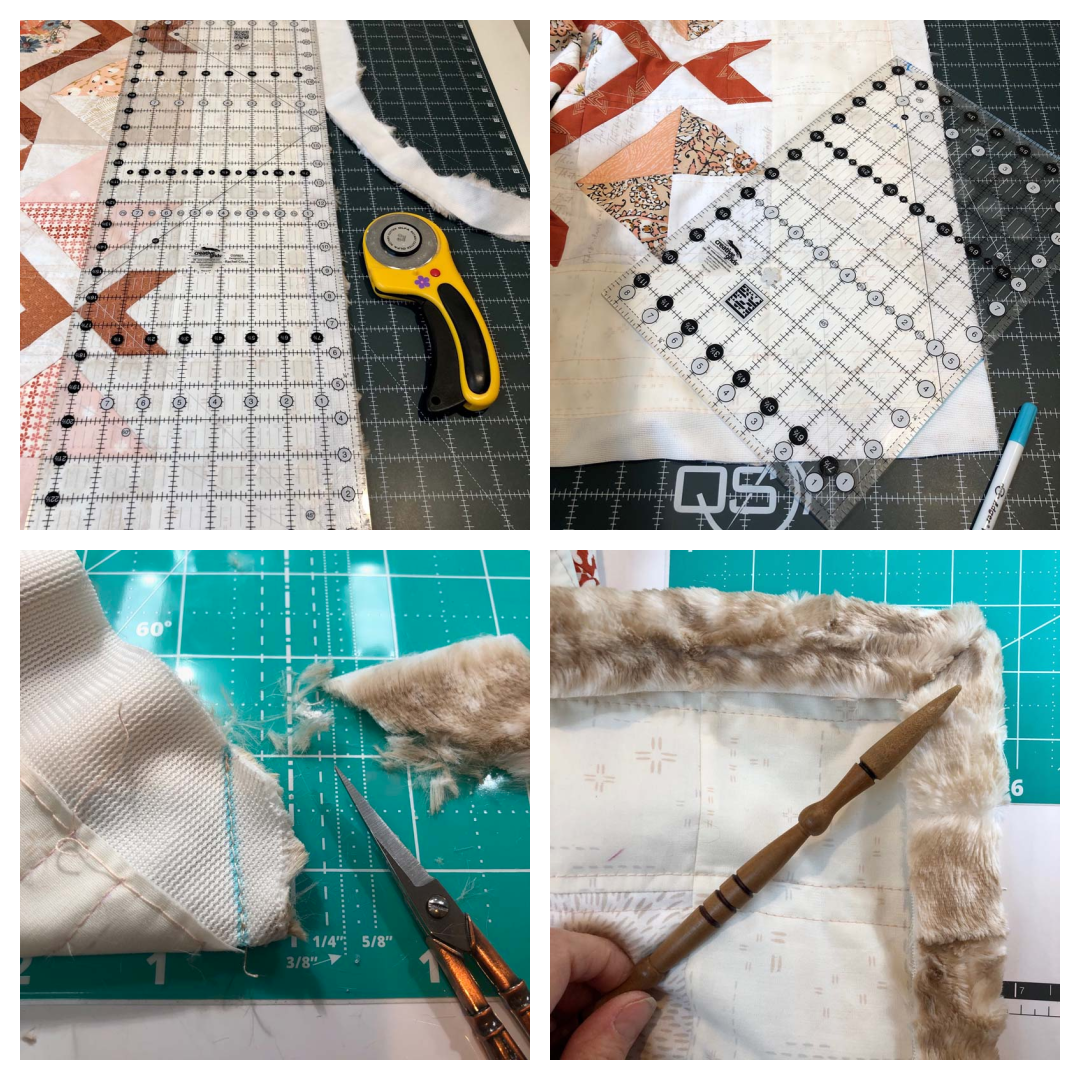
I trimmed my backing to extend 1 1/4″ on all four sides. This would give me a generous 1″ wide binding. If you’re using batting, there will be an extra step and other considerations for the width of the binding. One of the advantages of Cuddle minky is it does not fray, so you don’t need to turn the raw edges under.
There are a few options for stitching the binding down. I chose to use a serpentine stitch which is a gentle wavy line. It does a good job of securing the binding in place. It looks nice, but it’s so hard to see with this particular Cuddle Luxe. In the photo below (left), you can see the wavy stitching on the top horizontal edge. The stitching line will disappear into the nap of the fabric over time.
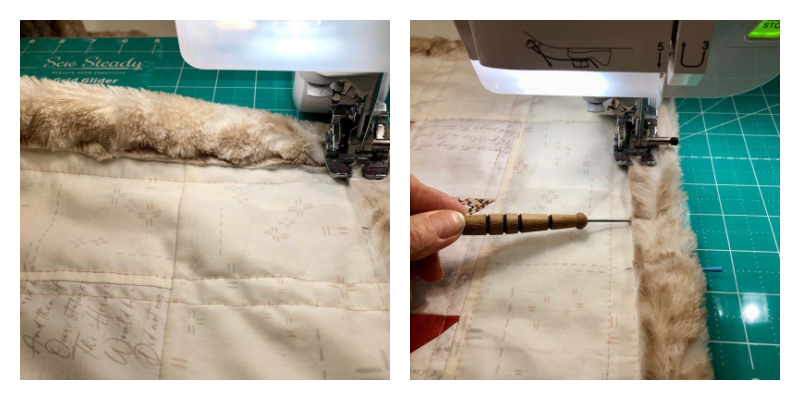
My intention here is just to show you what worked for me, not a full tutorial for self-binding. This video by Teresa Coates for Shannon Fabrics shows you how to sew a self-binding blanket and several variations for quilts. It’s what I used to navigate my way through my quilt.
Overall, this was a really quick and easy way to bind a quilt. I’ve used self-binding to make napkins and in a few other baby blankets and quilts. I’ll definitely use it again any time I have Cuddle minky on the back.
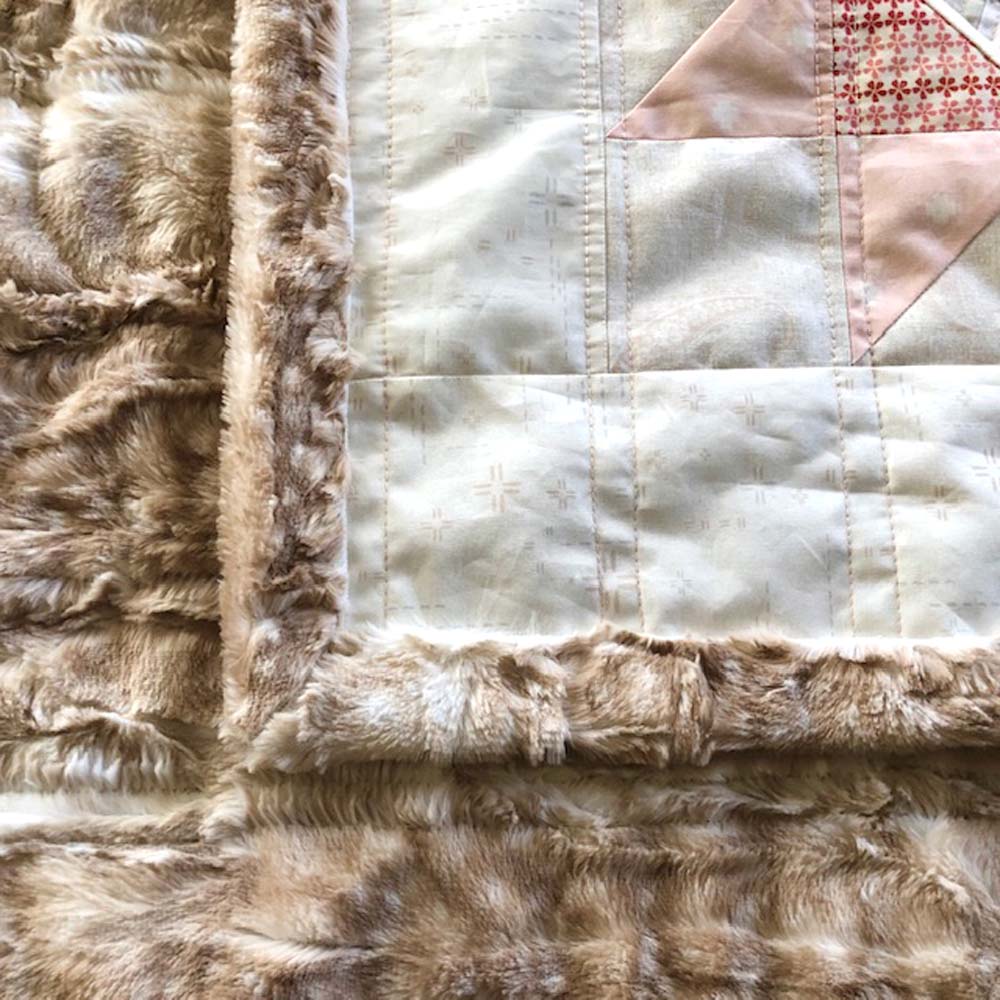
My top tips for working with Cuddle minky
- No need to prewash since it’s polyester and won’t shrink.
- It’s best to avoid ironing, but if necessary, use a low setting so you don’t melt the material.
- Polyester thread is suggested, but I’ve used cotton and it works okay.
- Use a 90/14 stretch needle or top stitch needle.
- Always use a walking foot.
- Use lots of pins! Teresa Coates suggests pinning parallel to the raw edge and then pin a second row parallel to the first in alternating positions (like footsteps).
- Lengthen your stitch to 3.0 – 3.5 mm.
- Use 1/2″ seam allowance.
- If you’re sewing Cuddle to another type of fabric such as cotton, place the Cuddle on the bottom. This allows the feed dogs to control it and feed evenly.
More Cuddle minky projects
I have used Cuddle minky many times in the past. Here are a few projects that showcase the variety of ways you can use this plush fabric.
- Lavender Llama hot/cold plush tutorial
- Soft and Striped Baby Quilt
- Travel pillow case
- Surrounded by Circles Baby Quilt
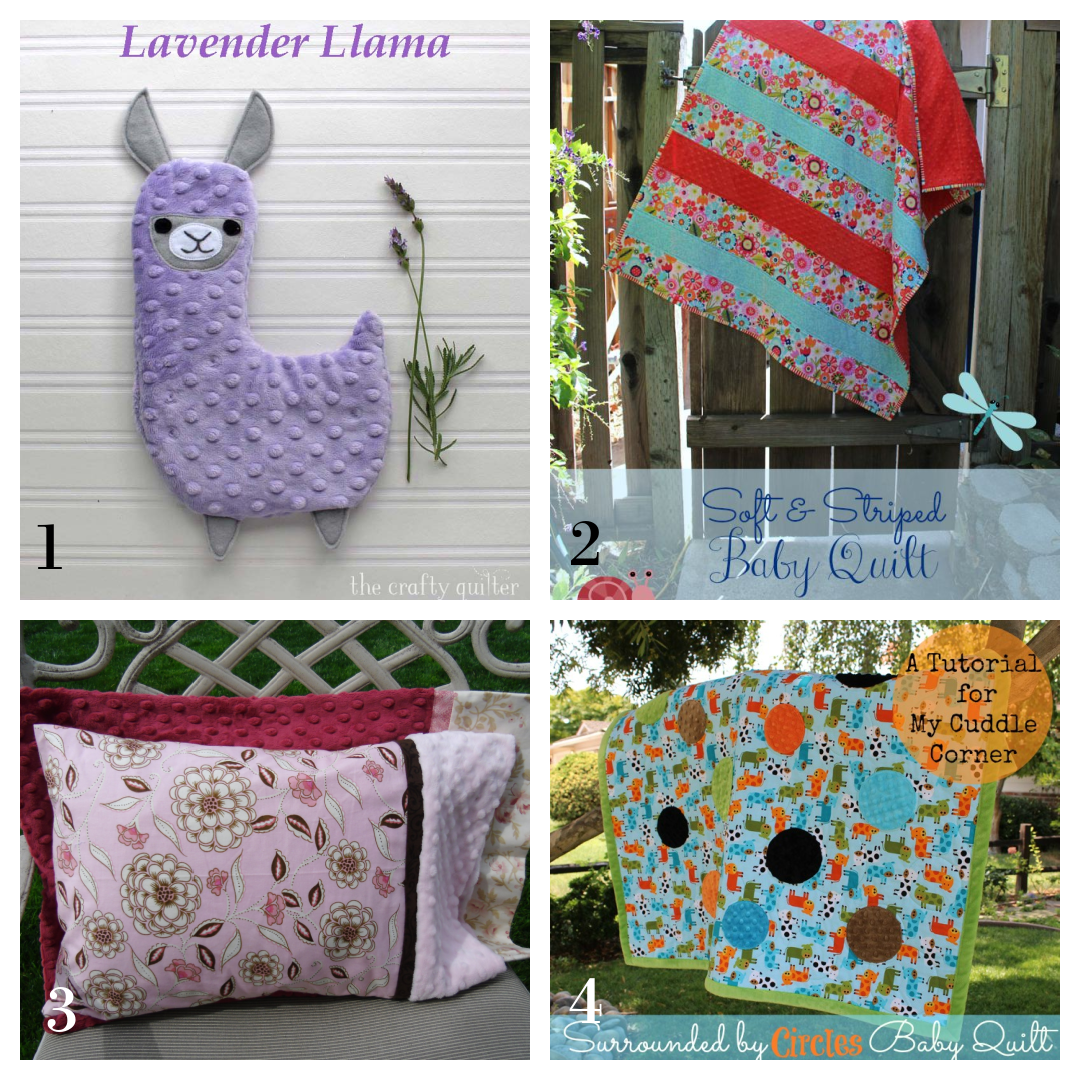
Plush microfiber and the environment
There is a big downside to using any type of plush or synthetic material in your quilting or sewing. They are not good for the environment because they shed tiny microplastics into the water when washed. Laundry has become a significant source of plastics in our oceans and waterways. This article from The New York Times and this one from Plastic Pollution Coalition are great resources for more information.
I struggle with this information because I want to be a good steward for our planet, yet I’m guilty of purchasing fleece clothing, Cuddle minky, synthetic fabric, etc. I think awareness is a good place to start, and you can go one step farther by implementing the following laundry protocols.
Ways you can reduce microfiber pollution
- Wash all synthetics including clothes, quilts, blankets and cleaning cloths less frequently.
- Spot clean when possible.
- Wash laundry in cold or tap water which may have less shedding power.
- Wash full loads of laundry (it causes less frixion).
- Avoid delicate settings (it uses more water).
- Line-dry when possible (great for the longevity of quilts, too).
- Front loading washing machines are better because they use less water and there is less agitation.
- Consider purchasing a Guppyfriend Washing Bag. This is similar to a lingerie bag, but made of finer mesh that will trap some (but not all) microplastics. May not be big enough for a quilt, though.
- Consider purchasing a Cora Ball. This laundry ball is thrown into the wash and will reduce the amount of fiber breaking away from clothes, quilts, etc. I wouldn’t use this with lingerie or fine garments as I “hear” it might snag those fibers.
Thanks for keeping these things in mind as you keep your clothes and quilts clean. We are a long way from solving this environmental crisis, but there are steps we can take to lessen our impact.
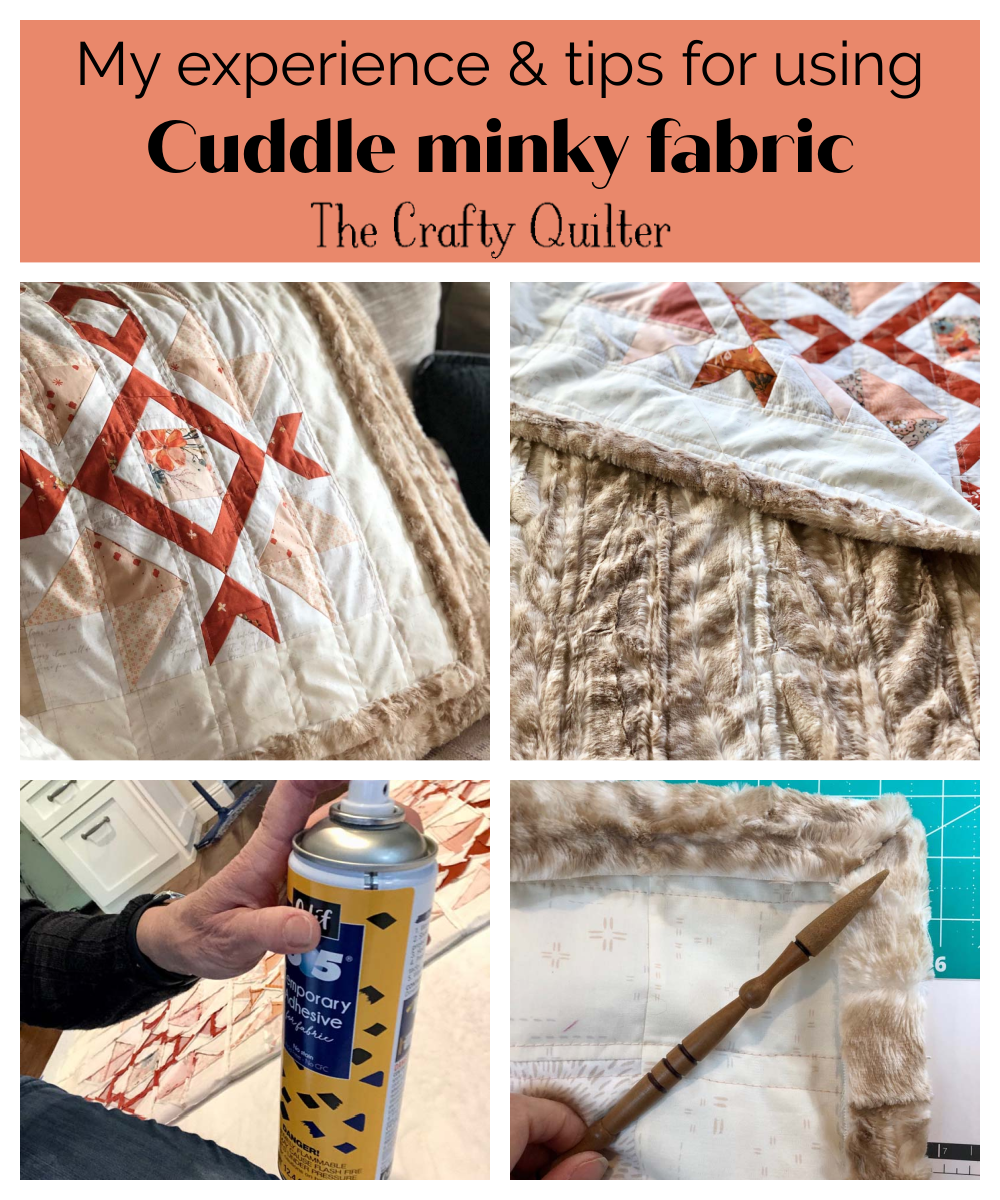
I hope you learned a little something from my experience using Cuddle minky on my latest quilt. It seems like every quilt offers an opportunity to grow and learn. In my opinion, it’s worth every bit of time and effort!
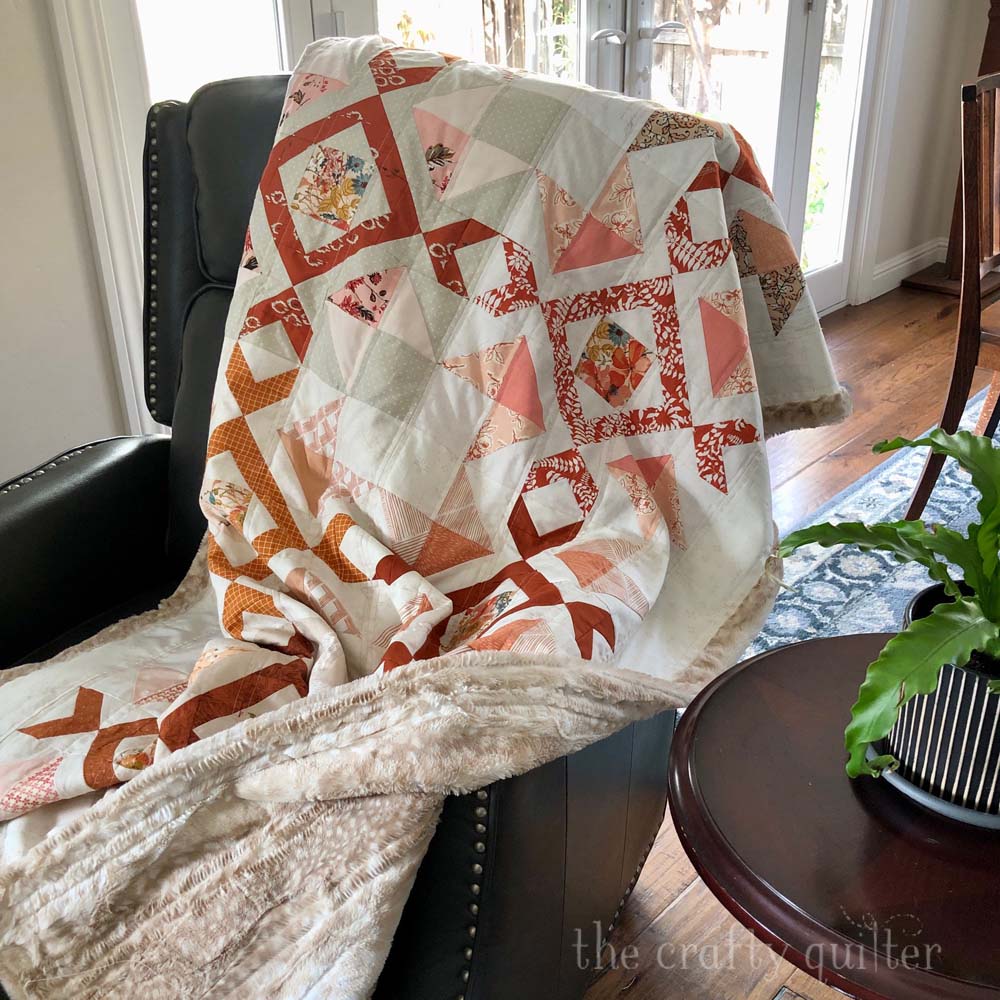
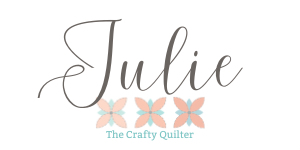
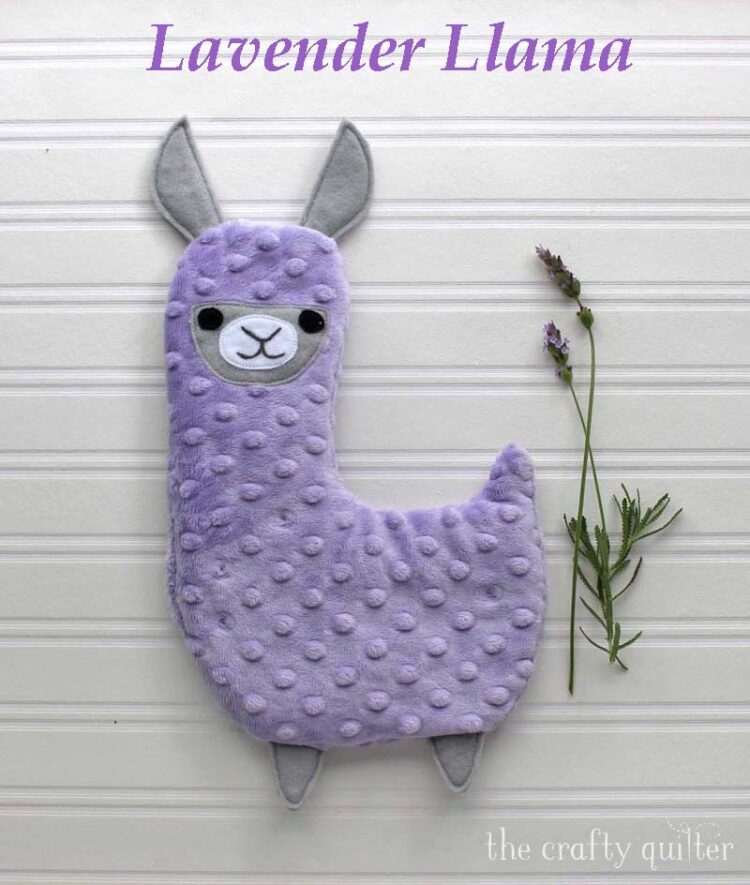
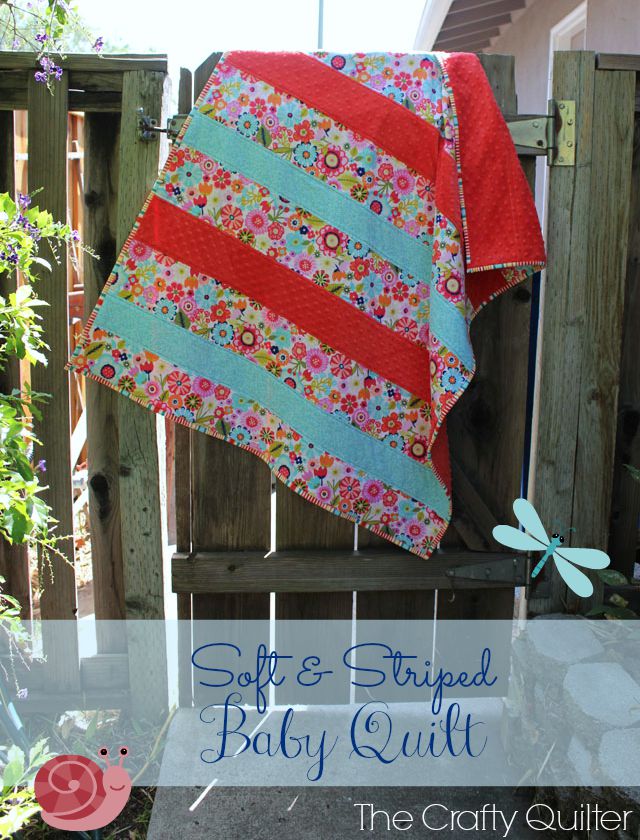
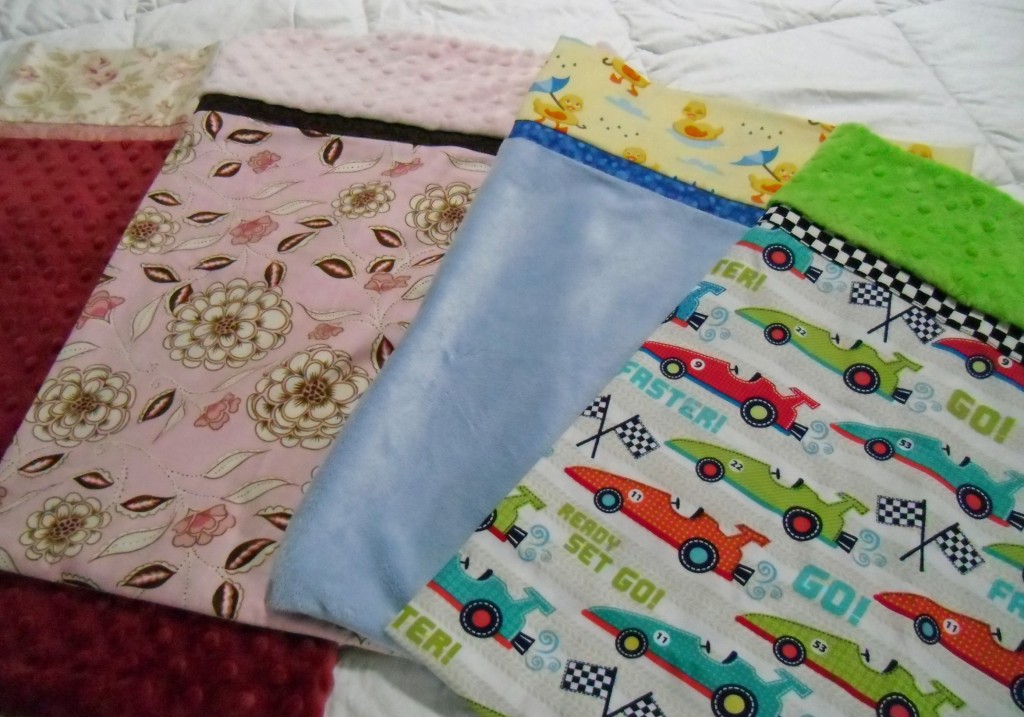
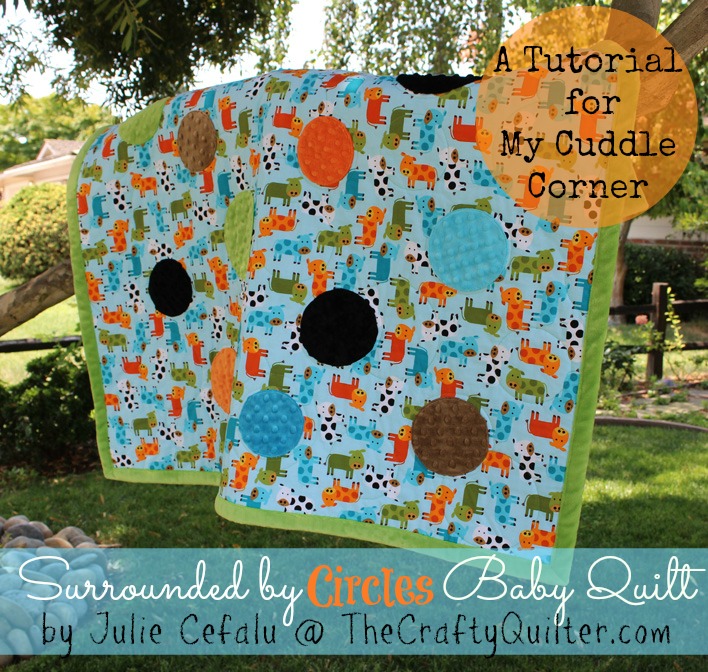
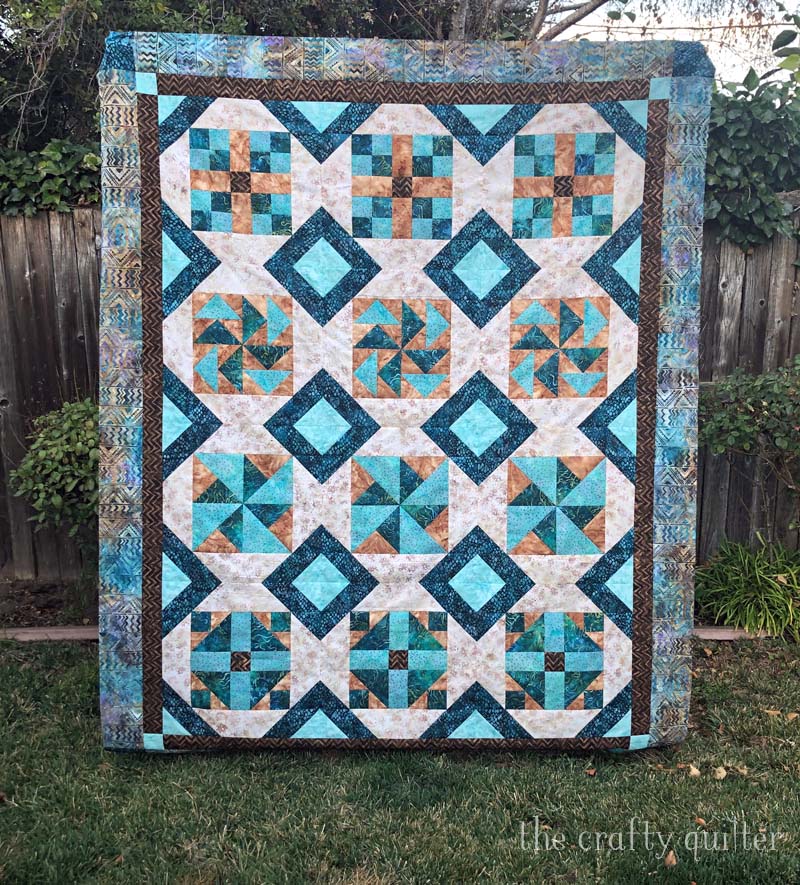
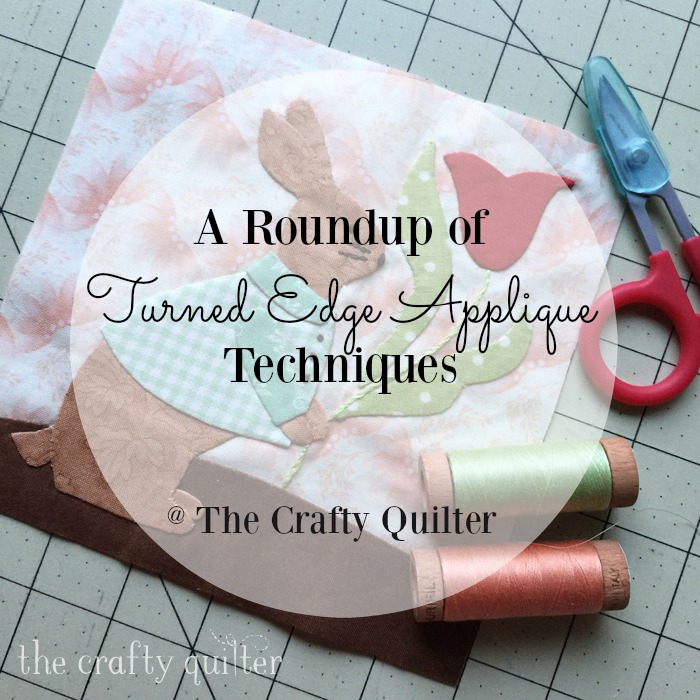
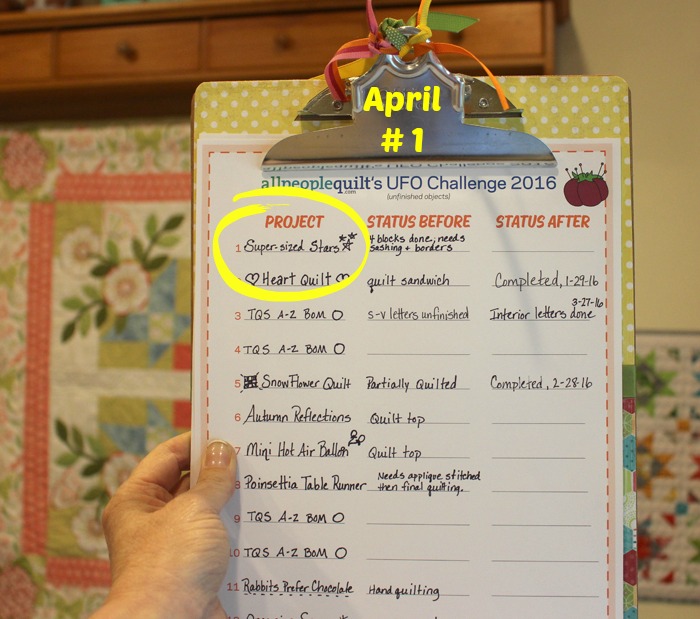
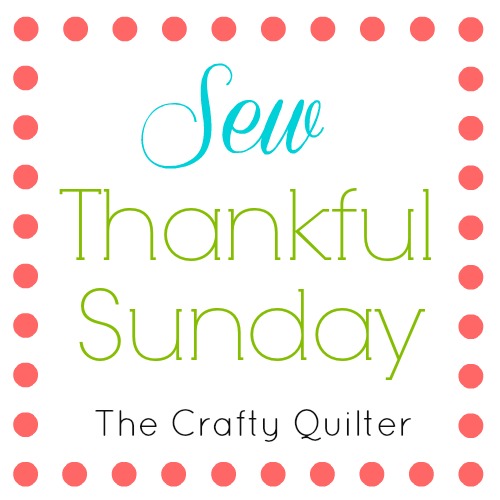
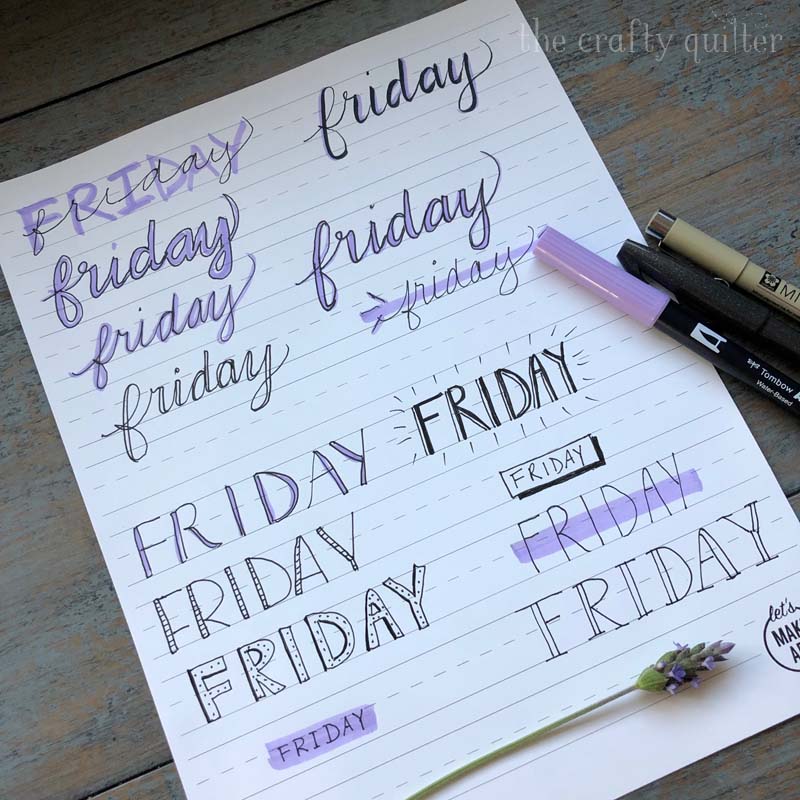
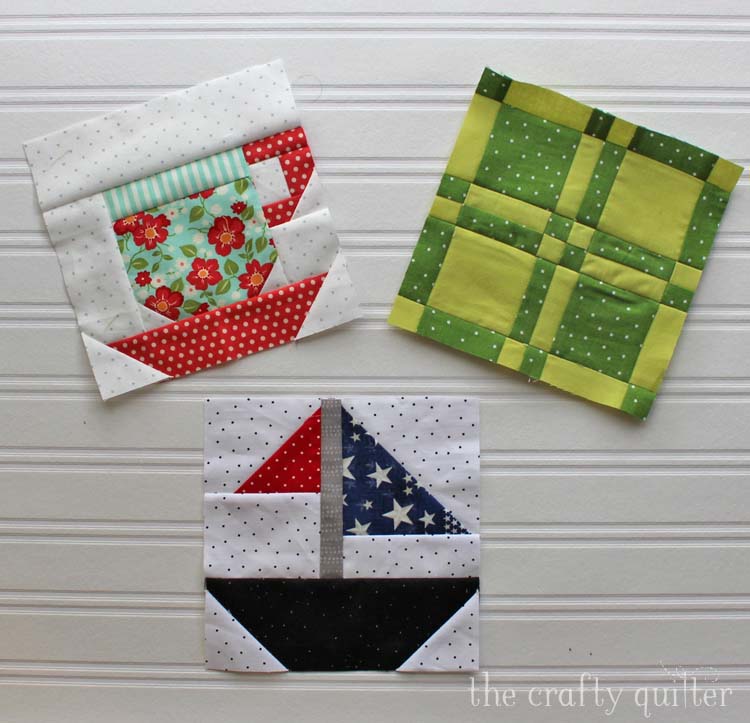
I am making a quilt/blanket for my grandson. I wanted to use cuddle luxe on the back to make it like a blanket, but am unsure about how to quilt it. My thought was to quilt the top to the batting, then add the cuddle on the back and just do a few vertical or horizontal lines to secure. I’m wanting it to feel like a blanket and not firm like a quilt. Will this work? Or should I quilt it with the cuddle on the back and do minimum quilting?
Thank you for this very helpful post. I’ve learned a lot 🙂
Thank you for this very informative post. I have a piece of cuddle luxe to back a lap quilt with, and you answered my final question about using batting. I am very aware of the downfalls of polyester and rarely use it. This ia a rare exception, along with the few items of microfiber clothing I have. Glad that I have a front load washer, also.
Thank you for including the information about the dangers of microplastics and ways to lessen the impacts of these products.
Thank you so much Julie for taking the time to give us the benefit of your experience with kinky/cuddle. I’ve used this on a few quilts before and, yes, it’s super slippery but worth the fiddling about for the coziness.
I usually use flannel instead of batting as it gives some stability without any heaviness. Your quilt looks really cuddly.
Great information. Thank you for sharing.
A tip about cutting fur fabric–cut from the wrong side using your scissor tips in little snips. There’s almost no mess.
About using the backing as a binding–I turn under the seam allowance and sew down the length of the quilt. Do this also on the opposite side (don’t try to turn corners or miter at this point). For the third side, fold the top end at a 45 degree angle, then fold the binding over the quilt edge and tuck and pin the binding down to about the middle of the side. Repeat this process from the other end of the third side. Sew the seam from the point of the miter to the point of the other miter. Repeat for the fourth side. It will look like you’ve fussed your way around the quilt in one continuous seam. It helps to allow for the bulk of the fabric by making the miters a bit off the quilt itself (don’t turn too tightly). I figured this out before I took a quilting class that taught me how to REALLY bind a quilt 🙂 !!
What an EXCELLENT tutorial … giving a blow-by-blow account of what to look out for and the tips you learned along the way. I wish I had had the benefit of this decades ago when I was making baby blankets x
Hi,
I love your newsletter. You always have great patterns and tutorials.However, I’d like to ask you to not recommend minke and fabrics like it. I understand how popular they are. I’d love to be able to use them. They’re just so bad for the environment. Here’s a link to an article by the New York Times https://www.nytimes.com/wirecutter/blog/reduce-laundry-microfiber-pollution/
Thanks,
Jennifer
Thank you, always so informative and helpful, so generous with your knowledge. All the best
Julie, Thank you for all your tips and tricks for using minky on the back of a quilt. I have some in my stash from when my grands were little; they are now high school and college age. Time to get my feet wet. Think that I will go with a “Warm and White” layer of batting, giving my quilt a “touch” more body. I’m wondering about doing it on my long-arm, any suggestions? Yours looks GREAT!!
Using Cuddle on the back, would you recommend pre-washing the cotton fabric in the quilt top before piecing?
Hi Susan,
I have heard it suggested that you prewash cotton fabric for the quilt top if you’re using minky for the back. However, the thing that shrinks the most in a quilt is the batting (unless it’s polyester). I don’t think prewashing cotton fabric is going to make that much of a difference. I did not prewash any of my fabric for the top, and since I don’t have any batting, I think it will be fine.
Julie
How nice and kind of you Julie to share all those tips with us. Very detailed and easy to implement. Your pictures were perfect. I have always used Minky but will give Cuddle a try. Thank you!
Susan
Thank you so much!! I haven’t tried minky yet, and I so appreciate everything in your post
Excellent hints. The times I have used cuddle/minky without batting, I have felt the same. I also think the grabbiness of the batting helps the whole thing from shifting. I love the self binding….and worrried that I had not turned mine under on one I did…so I was glad to see you didn’t too. I did find it really hard to see stitches, so I like the idea of the serpentine that gives you a wider swath to catch the fabric. Your quilt is gorgeous and luxurious and it is always fun to try something new and here you recommendations for working with it!